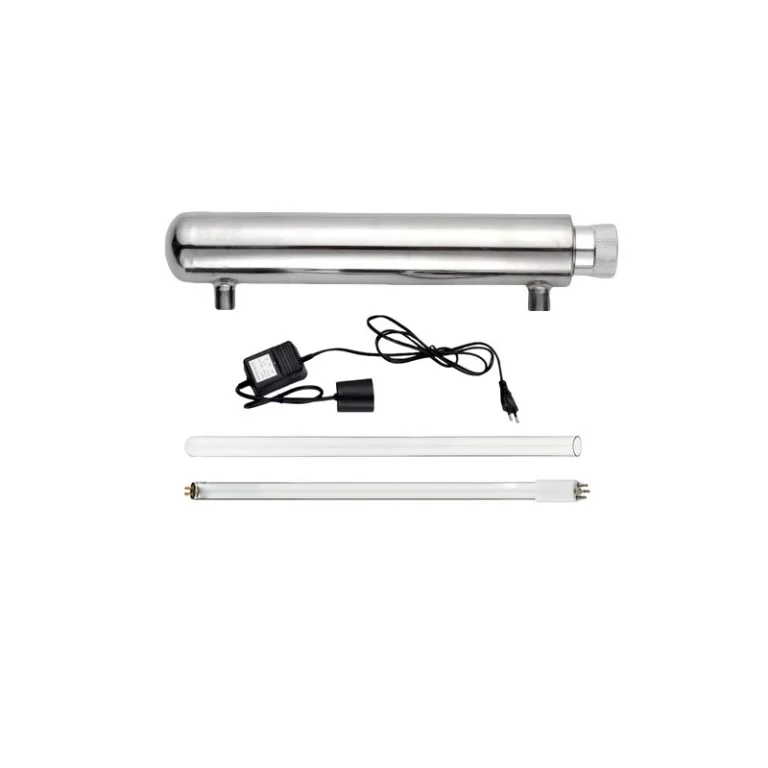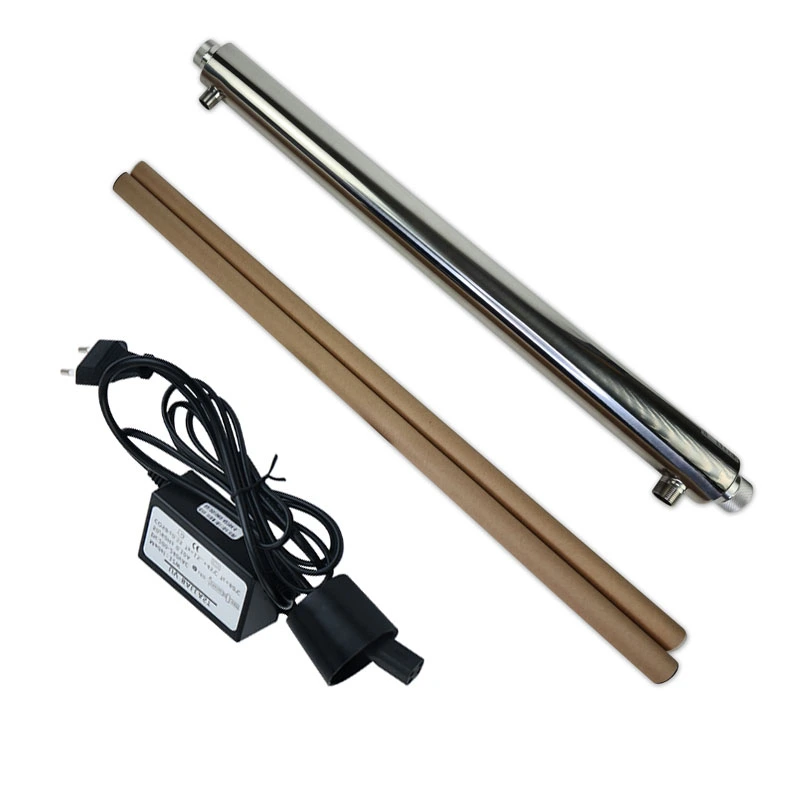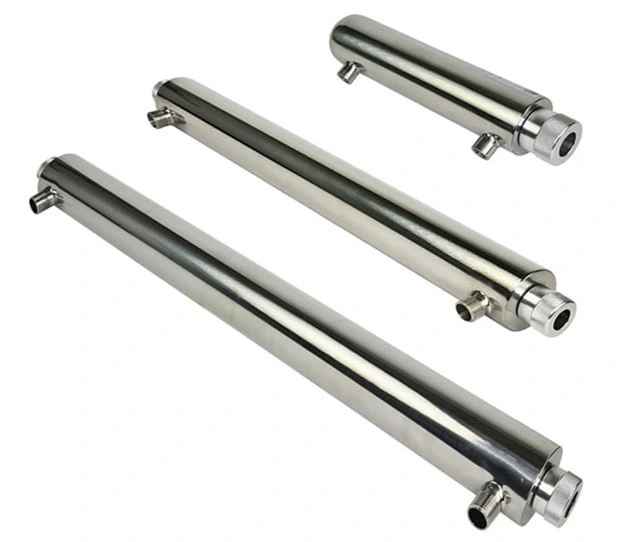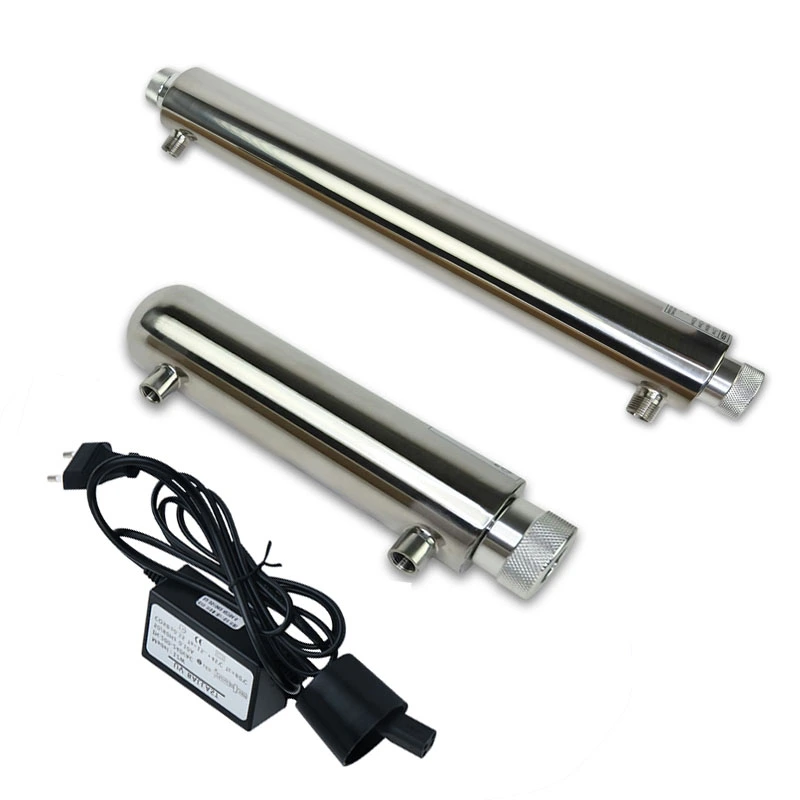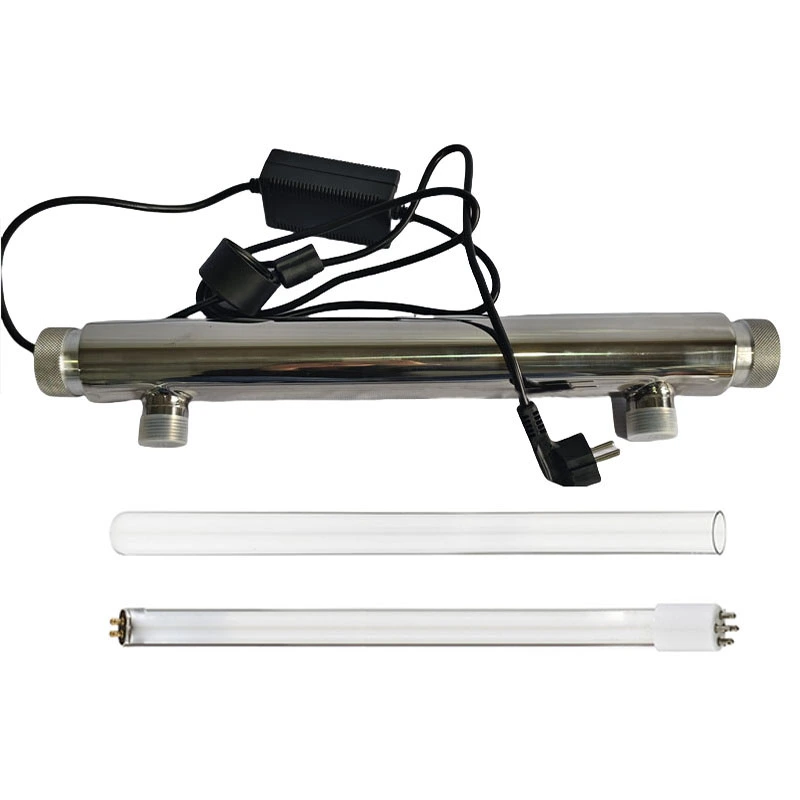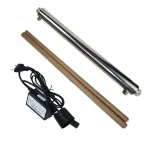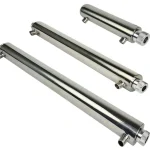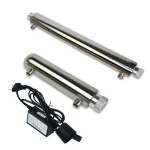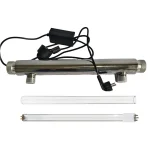BasideWT- Whole Home Water Filtration System & Replacement

Whole House UV Water Filter System UV-55 Ultraviolet Sterilizer for Complete Water Treatment & Germ Protection
PRODUCT PARAMETERS
- Product Name: UV Water Sterilizer
- Material: Stainless steel 304/316
- Power: 6W-80W
- Maximum operating pressure: 0.8MPa(116psi)
- Ambient water temperature: 2-40°
- UV transmittance: >75%
- Application: used to disinfect drinking water, RO water, domestic water, aquaculture water, etc.
- Supply includes: SS housing, UV lamp, quartz tube, ballast, gasket
- Filtrationstechnik: UV Sterilisation
- Suitable For: Commercial, Household
- Packing: Standard Exportation Package
Imagine turning on your tap, only to discover that the water flowing out might be harboring harmful bacteria, viruses, or parasites. It’s a concern that plagues many homeowners. Fortunately, a whole house UV water filter system, equipped with a UV ultraviolet sterilizer, offers a robust solution for complete water treatment and germ protection. In this in-depth article, we’ll dive into the world of UV water sterilizers, exploring their benefits, applications, and how they can revolutionize your home’s water quality.
The Basics of UV Water Sterilization
UV water sterilization isn’t a new concept, but its importance has grown exponentially in recent years. So, what exactly is it? At its core, UV water sterilization uses ultraviolet light to neutralize microorganisms in water. When water passes through a UV chamber, the UV light damages the DNA and RNA of bacteria, viruses, and other pathogens, rendering them unable to reproduce and causing them to die off.
How Does UV Water Sterilization Work?
The process is surprisingly simple yet highly effective. Water enters the UV water sterilizer and flows through a chamber containing a UV lamp. The lamp emits UV-C light, which has a wavelength of around 254 nanometers. This specific wavelength is proven to disrupt the genetic material of microorganisms. Once exposed, these pathogens can no longer multiply, effectively removing their threat to your water supply.
Key Benefits of UV Water Sterilization
- Chemical-Free: Unlike traditional water treatment methods that rely on chemicals like chlorine, UV water sterilization is chemical-free. This means no unpleasant taste or smell in your water.
- Broad-Spectrum Protection: A UV water sterilizer is effective against a wide range of microorganisms, including E. coli, Cryptosporidium, and Giardia. According to a study by the Water Quality Association, UV systems can eliminate up to 99.99% of harmful pathogens [Water Quality Association, 2023].
- Quick and Efficient: The sterilization process is rapid, taking just seconds to disinfect water as it flows through the system.
LSI Keywords
- Ultraviolet water disinfection
- UV water purification
- Home UV water treatment
- UV Water Sterilizer
Introducing the Whole House UV Water Filter System
A whole house UV water filter system is designed to treat all the water entering your home, ensuring that every tap, shower, and appliance receives clean, safe water. These systems are typically installed at the main water supply line, acting as a barrier against contaminants.
Components of a Whole House UV Water Filter System
- UV Chamber: This is where the magic happens. The chamber houses the UV lamp and is designed to allow water to pass through while maximizing exposure to the UV light.
- Control Box: Monitors the operation of the UV lamp, ensuring it’s functioning properly and alerting you when it needs replacement.
- Flow Sensor: Regulates the water flow through the system, ensuring that the water is exposed to the UV light for the optimal amount of time.
Components of a Whole House UV Water Filter System
- UV Chamber: This is where the magic happens. The chamber houses the UV lamp and is designed to allow water to pass through while maximizing exposure to the UV light.
- Control Box: Monitors the operation of the UV lamp, ensuring it’s functioning properly and alerting you when it needs replacement.
- Flow Sensor: Regulates the water flow through the system, ensuring that the water is exposed to the UV light for the optimal amount of time.
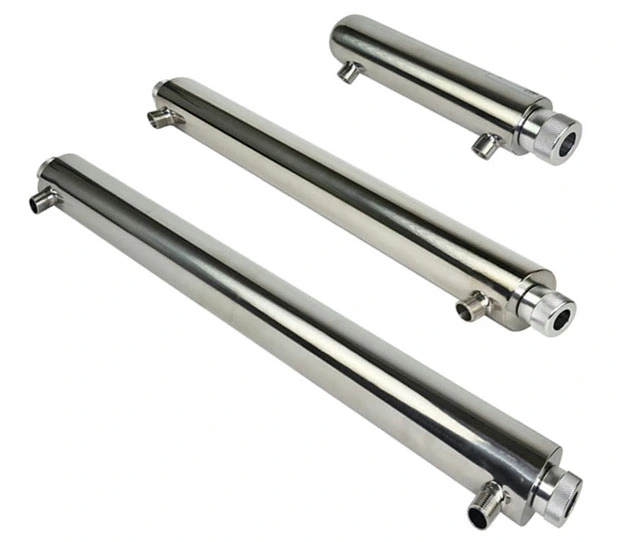
Advantages of a Whole House System
- Comprehensive Protection: With a whole house system, you don’t have to worry about which taps or appliances are getting treated water. Every drop is sterilized, providing consistent protection.
- Long-Term Savings: While the initial investment may seem high, over time, a whole house UV water filter system can save you money on bottled water, appliance repairs (due to less mineral buildup), and potential medical bills from waterborne illnesses.
UV Water Sterilizer vs. Other Water Treatment Methods
To truly understand the value of a UV water sterilizer, let’s compare it with other common water treatment methods:
| Treatment Method | Effectiveness Against Microorganisms | Chemical Usage | Impact on Water Taste | Maintenance Requirements |
|---|---|---|---|---|
| UV Water Sterilization | High (eliminates up to 99.99% of pathogens) | None | None | Low (lamp replacement annually) |
| Chlorination | Moderate (can leave harmful by-products) | Yes | May alter taste and smell | Regular chemical addition |
| Filtration | Varies (effective against particles, less so against microorganisms) | None | None | Regular filter replacement |
As the table shows, UV water sterilization stands out for its high effectiveness and chemical-free operation.
UV Water Stereotzer Parameters & Dimensions
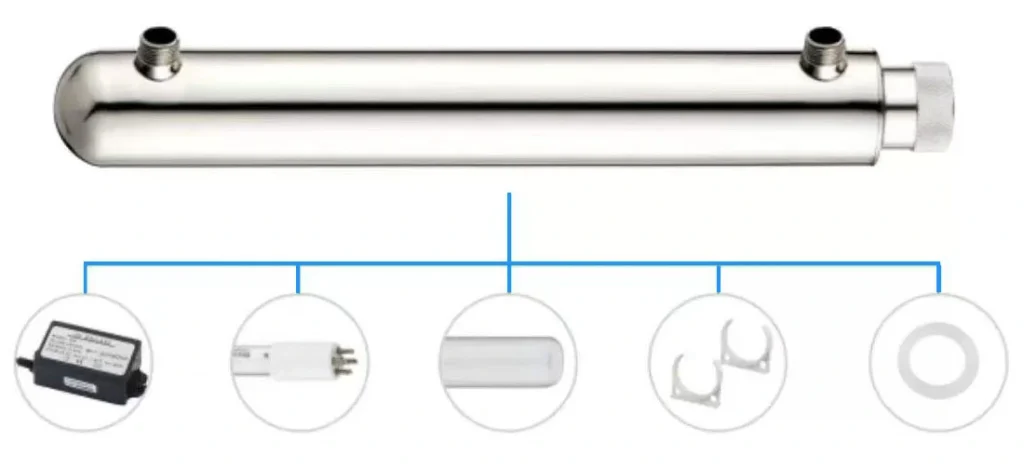
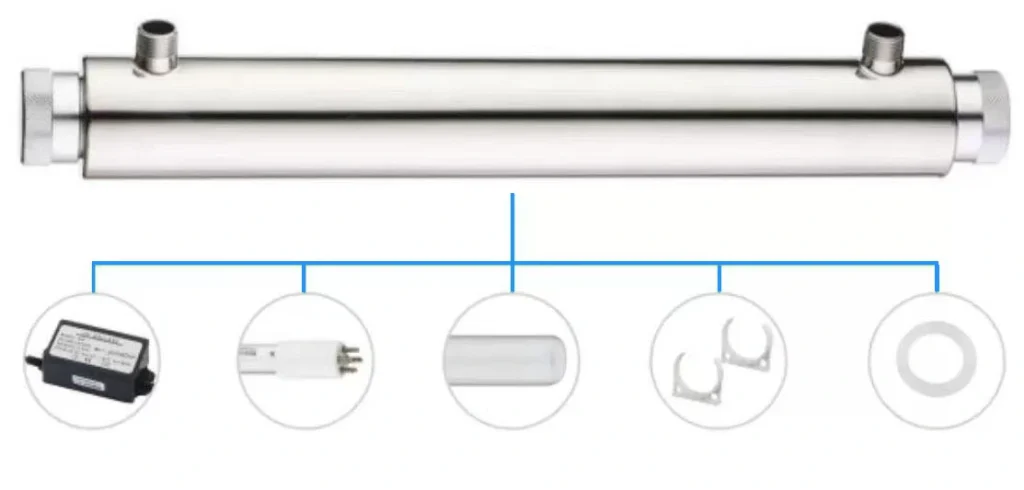
| Model | Flow rate m3/hr | GPM | Reactordimension | Interface Size | Lamp power |
| BSD-004 | 0.07 | 0.3 | 200 X 50.8mm | 1/4″ | 4w |
| BSD-006 | 0.1 | 0.5 | 260 X 50.8mm | 1/4″ | 6w |
| BSD-012 | 0.2 | 1 | 315 X 50.8mm | 1/4″ | 12w |
| BSD-016 | 0.4 | 2 | 375 X 63.5mm | 1/2″ | 16w |
| BSD-025 | 1.4 | 6 | 595 X 63.5mm | 1/2″ | 25w |
| BSD-030 | 1.8 | 8 | 915 X 63.5mm | 3/4″ | 30w |
| BSD-035 | 2.0 | 9 | 955 X 63.5mm | 3/4″ | 35w |
| BSD-040 | 2.3 | 10 | 890 X 63.5mm | 3/4″ | 40w |
| BSD-055 | 2.7 | 12 | 955 X 63.5mm | 3/4″ | 55w |
| BSD-080 | 3 | 12 | 910 X 63.5mm | 3/4″ | 80w |
Installation Guide: Setting Up Your Whole House UV Water Filter System
Installing a whole house UV water filter system might seem like a complex task, but with the right steps, it can be manageable. Here’s a step-by-step guide:
Step 1: Gather Your Tools and Materials
You’ll need a pipe cutter, wrenches, Teflon tape, and of course, the UV water filter system components. Make sure you have everything on hand before you start.
Step 2: Turn Off the Water Supply
Locate your home’s main water shut-off valve and turn it off. This prevents water from flowing during the installation process.
Step 3: Prepare the Installation Site
Choose a location near the main water supply line. The area should be dry, well-ventilated, and easily accessible for future maintenance.
Step 4: Install the UV Water Filter System
Connect the inlet and outlet pipes to the system, following the manufacturer’s instructions carefully. Use Teflon tape to ensure a tight seal and prevent leaks.
Step 5: Power On and Test
After installation, turn the water supply back on and check for any leaks. Then, power on the UV water filter system and let the water flow for a few minutes to ensure it’s working properly.
⚠ Note: If you’re not experienced with plumbing or electrical work, it’s highly recommended to hire a professional for installation. Incorrect installation can lead to water damage or ineffective treatment.
Common Misconceptions About UV Water Sterilizers
Despite their effectiveness, there are several myths surrounding UV water sterilizers. Let’s set the record straight:
- Myth: UV water sterilizers don’t work if the water is cloudy.
- Fact: While UV light works best with clear water, modern systems often include pre-filters to remove sediment and turbidity. This ensures that the UV light can penetrate the water effectively.
- Myth: UV water sterilizers are too expensive to operate.
- Fact: In reality, the main cost associated with UV water sterilizers is the annual lamp replacement. The energy consumption is relatively low, making it an affordable long-term solution.
Real-World Experience: Transforming a Home’s Water with a UV Water Filter System
Our team encountered a family in 2024 whose well water was contaminated with coliform bacteria. Concerned about their health, they decided to install a whole house UV water filter system. After installation, follow-up water tests showed a dramatic improvement. The UV water sterilizer had effectively eliminated the bacteria, providing the family with clean, safe water. They no longer worried about the quality of their water, and the peace of mind it brought was priceless.
Making the Right Choice for Your Home’s Water Quality
Investing in a whole house UV water filter system with a UV ultraviolet sterilizer is a decision that pays off in multiple ways. It offers chemical-free, comprehensive protection against a wide range of waterborne pathogens, ensuring the safety of your family. By understanding how these systems work, their benefits, and proper installation and maintenance, you can make an informed choice for your home.
Practical Checklist for UV Water Sterilizer Owners
- Regular Lamp Replacement: Replace the UV lamp annually, or as recommended by the manufacturer.
- Monitor Water Flow: Check the flow sensor regularly to ensure optimal water flow through the system.
- Inspect for Leaks: Periodically check the pipes and connections for any signs of leaks.
- Schedule Professional Maintenance: Have a professional inspect the system at least once every two years.
- Keep Records: Maintain a log of lamp replacements, maintenance, and water test results for easy reference.
FAQs
Choosing the perfect water treatment system depends on your specific water quality, household size, and needs. We make it easy with our 3-step process:
Water quality testing – analyze your water for contaminants, hardness, and other factors.
Personalized Consultation – Our experts recommend systems based on your results, budget, and water usage.
Customized Solution – From whole-house filtration to targeted solutions (e.g., RO for drinking water, softeners for hard water), we tailor the system to your home.
To determine your water flow rate in gallons per minute (GPM), follow these simple steps:
Prepare for Testing:
- Prepare for Testing:
- Ensure all water fixtures in your home are turned off
- Select the faucet closest to your main water supply line (usually the kitchen sink or an outdoor spigot)
- Conduct the Test:
- Fully open the selected faucet
- Time how many seconds it takes to fill a 1-gallon container
- Repeat the test 2-3 times for accuracy
- Calculate Your Flow Rate:
Use this formula: Flow Rate (GPM) = 60 ÷ Fill Time (seconds)Example Calculation:- If your 1-gallon container fills in 15 seconds
- 60 ÷ 15 = 4 GPM
For more precise measurements or whole-home flow rate analysis, contact our water system specialists. We can help you determine if your current flow rate meets the requirements for any water treatment systems you’re considering.
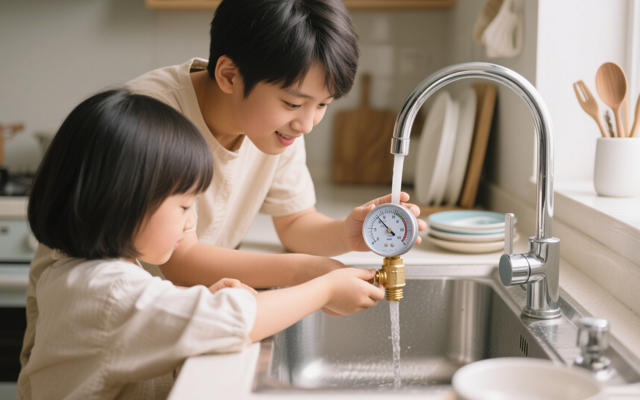
1. Check Multiple Fixtures
Test water pressure at different faucets, showers, and appliances (e.g., kitchen sink, bathroom sink, outdoor hose).
If only one fixture has low pressure, the problem is likely localized (clogged aerator, faulty valve, or pipe issue).
If all fixtures have low pressure, the issue is systemic (main supply, pressure regulator, or water heater).
2. Inspect the Aerator or Showerhead
Unscrew the faucet aerator or showerhead and check for mineral deposits, debris, or rust.
Soak it in vinegar overnight to dissolve buildup, then rinse and reattach.
3. Check the Main Shutoff Valve
Locate the main water shutoff valve (usually near the water meter or where the main line enters the house).
Ensure it’s fully open (turn clockwise to close, counterclockwise to open).
1. Activated Carbon Filters
- Removes:
✅ Chlorine & chloramines
✅ Bad tastes & odors (e.g., sulfur)
✅ Volatile Organic Compounds (VOCs)
✅ Some pesticides & herbicides
❌ Does not remove heavy metals, dissolved minerals, or microbes
2. Reverse Osmosis (RO) Systems
- Removes:
✅ Heavy metals (lead, arsenic, mercury, cadmium)
✅ Dissolved salts (fluoride, nitrates, sulfates)
✅ Microplastics & sediment
✅ Bacteria & viruses (if combined with UV)
✅ Chlorine & chemicals (with carbon pre-filter)
❌ May remove beneficial minerals (can be remineralized)
3. Water Softeners (Ion Exchange)
- Targets:
✅ Calcium & magnesium (hardness)
✅ Low levels of iron & manganese
❌ Does not remove bacteria, chlorine, or heavy metals
4. UV Purifiers
- Kills:
✅ Bacteria (E. coli, coliform)
✅ Viruses (rotavirus, hepatitis)
✅ Protozoa (Giardia, Cryptosporidium)
❌ Does not remove chemicals, metals, or sediment
5. Sediment Filters
- Removes:
✅ Sand, rust, dirt
✅ Large particles & silt
❌ Does not remove dissolved contaminants
6. Whole-House Filtration Systems
Combines multiple methods (carbon + sediment + UV) for broad protection.
- UV: Kills bacteria/viruses but doesn’t remove chemicals or particles.
- RO (Reverse Osmosis): Removes 95–99% of contaminants (heavy metals, dissolved salts) but requires electricity.
- Activated Carbon: Absorbs chlorine, odors, and organic compounds—ideal for pre-filtration.
REQUEST A QUOTE
RELATED PRODUCTS
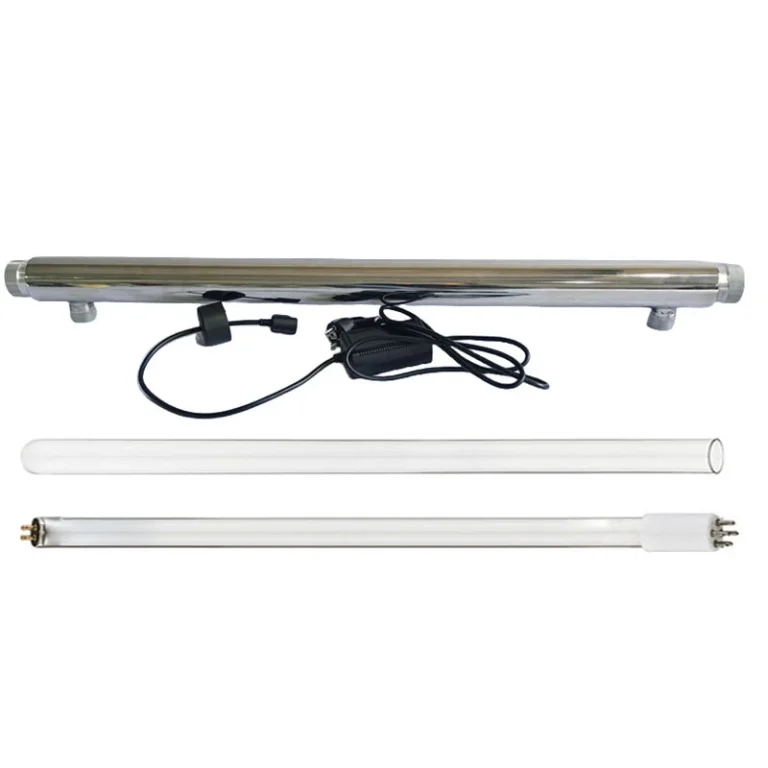
BasideWT 55W Ultraviolet Light UV Water Sterilizer Whole House 12gpm 55W UV Light System

Ultraviolet Sterilizer BasideWT Light Stainless Steel Whole House UV System 2 GPM 0.4T/H
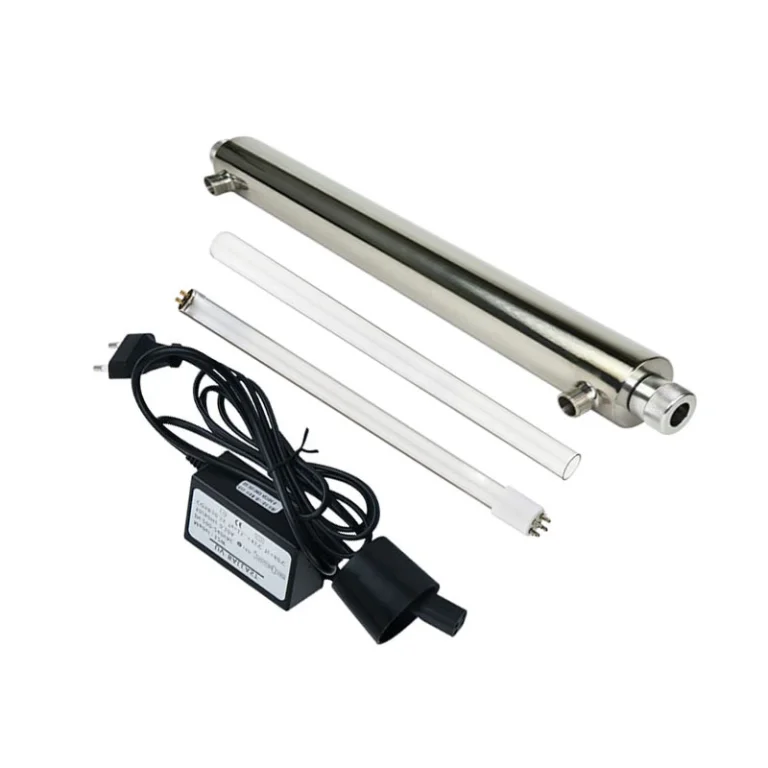
Ultraviolet 25 Watt Classic UV Sterilizer UV Quartz Sleeve Light PC-2
